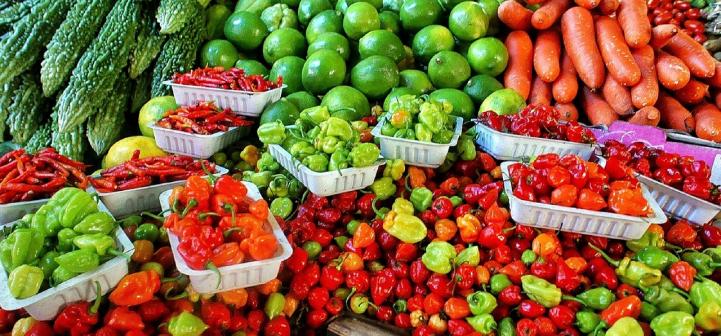
Food remains an important topic with health implications tied to chronic diseases, policy, and ethics. Over time, this focus has evolved into farm-to-fork, eating local, and supporting one’s agricultural community. This holds true in the school environment, and is especially pertinent to school lunch and breakfast. For example, the United States Department of Agriculture (USDA) has been providing assistance with grants and technical assistance for schools to purchase local foods and create sustainable eating practices. (Check out the USDA Farm to School Census to see how your state ranks in farm to school activities.)
A responsibility of the school food system is to make informed decisions. From the beginning, people who make these decisions include the food service department director, school district’s registered dietitian, and possibly the school district’s legal representative, school’s garden manager, and local health department representative.
Knowing the policies on procuring local foods can help give guidance and avoid barriers from the school through state level. The local procurement team may want to define what “local” is to that school’s community. Is it by county, region, state, or miles as the crow flies? Are there certain agricultural practices your school expects the farm to follow? You may want to work with your county’s Extension office to help educate the school community on what defines terms such as cage-free, grass fed, organic, GMO-free, etc.
Food safety is an important part of the conversation when introducing any food or beverage into the school environment. Emerging national trends include more outbreaks related to fruits and vegetables, when compared to meat, dairy, and grains. Even organic foods have been linked to outbreaks. It is estimated that 1 in 6 Americans will incur a foodborne illness, although, most people will not seek medical attention. Young children (0-5yrs), (pregnant women, older adults (65+ yrs)), and the immunocompromised are considered more vulnerable in acquiring a foodborne illness. Knowing how to identify safe agricultural growing and delivery practices when procuring local foods is especially important for school nutrition programs.
At the federal level, the USDA does not impose specific food safety requirements. In the USDA’s Guide to “Procuring Local Foods for Child Nutrition Programs,” it highlight that school food authorities
…should always purchase food from reliable, reputable sources that follow GAPs and good handling practices (GHPs). USDA does not require school nutrition programs to purchase from GAP certified farms. In some instances, school districts or States may require schools purchase only from GAP certified farms. Food safety requirements should be clearly outlined in the bid proposal. Ultimately, it is up to the buyer to determine and document purchases are coming from a safe source.
The word “reputable” becomes open for interpretation. A reputable vendor may imply they regularly implement safe food handling practices. Some programs to highlight are the Good Agricultural Practices (GAPs) and Good Handling Practices (GHPs) that are voluntary audits for vendors/growers, and nationally recognized. GAPs and GHPs audits have various tiers, and can be specialized for a commodity (eg. mushrooms). The ultimate goal is to help assure buyers that the farm operation is doing everything they can to keep their produce safe. GAPs and GHPs educate growers on how bacterial contamination can negatively influence their water source(s), soil-amendments (waste), wildlife (domestic and wild), and worker hygiene. This allows growers to be proactive and anticipate problems that could lead to a food safety problem and make a corrective action to mitigate risk. An example would be a deer eating garden vegetables, where a corrective action may be that the farmer puts up a fence to prevent the deer from introducing microbial contaminants through its feces in the garden.
Another way to determine whether a farming operation is reputable is to provide a detailed request for information (RFI). The USDA defines an RFI as a tool “to conduct market research, design bid documents, assess local availability, and decide what products to solicit locally.” An RFI is where the school district can ask farming operations to meet their reliable and reputable needs, if a farm is not GAP certified. Minnesota (Appendix E) provides a detailed example. Minnesota’s annual RFI requires “information on liability insurance, traceability (farm name labeling), food safety, and the onboarding process required of all producers that provide produce to the district. Each producer that sells to these schools participates in an onboarding process, which includes a farm site visit, a food safety workshop.”
Similar policies and practices should be in place for donated foods or foods that are gleaned. Last, the school should have a protocol in place for recalling locally purchased food items if there is a concern about contaminated foods, and this protocol should be communicated with local growers as part of the purchasing agreement. Communication and understanding food safety recommendations are important to foster and support farm to school activities.
Helpful USDA resources:
- Procuring local foods for child nutrition programs
- Decision Tree: How will you bring local foods into the cafeteria with your next purchase
- Local meat in child nutrition programs
- Appendix E: excerpt from Minneapolis public schools request for information (pg 116)
Part two, coming soon, will focus on meat, poultry, and eggs.
Contributor
Shauna Henley, University of Maryland Extension
Sources
Harvey, R. R., Zakhour, C. M., & Gould, L. H. (2016). Foodborne Disease Outbreaks Associated with Organic Foods in the United States. Journal of food protection, 79(11), 1953-1958.
CDC. Surveillance for Foodborne Disease Outbreaks–United States, 1998-2008. MMWR 2013;62(No. SS-2).
USDA Agricultural Marketing Service. Good Agricultural Practices (GAP) & Good Handling Practices (GHP)
